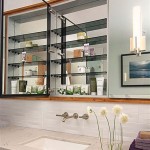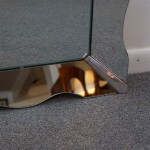Rearview Mirror Car Recorder: Enhancing Driving Safety and Security
The rearview mirror car recorder, also known as a dashcam integrated into the rearview mirror, is an increasingly popular automotive accessory designed to capture video and audio recordings of a vehicle’s surroundings while in operation or parked. These devices offer a multifaceted approach to enhancing driving safety, providing evidence in the event of accidents, and deterring theft and vandalism. The integration with the rearview mirror allows for a discreet installation and minimizes obstruction of the driver's field of vision.
Traditional dashcams are often mounted on the windshield using suction cups or adhesive mounts, which can sometimes be visually distracting or prone to falling off. Rearview mirror car recorders offer a more streamlined solution by replacing the existing rearview mirror with a unit that incorporates a high-definition camera, a display screen, and recording capabilities. The design allows for a clean and integrated look, seamlessly blending into the vehicle’s interior.
The core functionality of a rearview mirror car recorder revolves around its ability to continuously record video footage of the road ahead, and sometimes, the interior of the vehicle. This recording is typically stored on a removable memory card, such as an SD card or microSD card. Most devices are configured to record in a loop, automatically overwriting older footage once the memory card is full. This ensures continuous recording without requiring manual intervention.
Key Point 1: Benefits for Legal and Insurance Purposes
One of the primary benefits of using a rearview mirror car recorder lies in its ability to provide objective evidence in the event of a traffic accident. In situations where liability is disputed, the video footage can serve as irrefutable proof of what transpired leading up to the collision. This can be invaluable in resolving insurance claims and legal proceedings, potentially saving significant time and money.
The footage captured by the car recorder can clearly depict factors such as which driver was at fault, whether traffic signals were obeyed, and the presence of any witnesses. This impartial record can help to expedite the claims process and ensure a fair resolution. Insurance companies often view dashcam footage favorably as it provides a clear and unbiased account of the accident.
Furthermore, in cases of hit-and-run accidents, the car recorder can capture crucial details such as the license plate number of the offending vehicle, even if the recordings are not crystal clear. This information can be provided to law enforcement agencies to assist in identifying and apprehending the responsible party.
Beyond accident documentation, the footage can also be used to defend against false accusations of traffic violations. If a driver is wrongly accused of running a red light or speeding, the dashcam recording can provide definitive proof to refute these claims.
Key Point 2: Features and Functionalities to Consider
When selecting a rearview mirror car recorder, it is crucial to consider several key features and functionalities to ensure that the device meets the specific needs and requirements of the user. These features include video resolution, viewing angle, night vision capabilities, loop recording, and parking monitoring.
Video resolution is a critical factor, as it directly impacts the clarity and detail of the recorded footage. Higher resolution, such as 1080p Full HD or even 4K Ultra HD, ensures that the footage is sharp and clear, making it easier to identify important details such as license plates and road signs. A resolution of at least 1080p is generally recommended for optimal clarity.
The viewing angle of the camera determines the width of the scene that is captured. A wider viewing angle, typically ranging from 140 to 170 degrees, provides a more comprehensive view of the road and surrounding environment. This ensures that a wider range of events is captured, including vehicles approaching from the sides or pedestrians crossing the street.
Night vision capabilities are essential for recording clear footage in low-light conditions. Car recorders with good night vision employ features such as infrared (IR) LEDs or wide dynamic range (WDR) technology to enhance visibility in darkness. WDR technology balances the light and dark areas of the image to produce a more balanced and detailed recording.
Loop recording is a standard feature that automatically overwrites older footage once the memory card is full. This ensures continuous recording without requiring manual intervention. The user can typically adjust the loop recording duration, such as 1 minute, 3 minutes, or 5 minutes. It is important to choose a memory card with sufficient capacity to accommodate the desired recording duration.
Parking monitoring mode allows the car recorder to automatically start recording if it detects an impact or motion while the vehicle is parked. This feature can be useful for capturing footage of vandalism, theft, or hit-and-run accidents in parking lots. Some car recorders require a hardwiring kit to enable parking monitoring mode, as this allows the device to draw power directly from the vehicle’s battery even when the ignition is turned off.
In addition to these core features, some rearview mirror car recorders may also include advanced functionalities such as GPS tracking, which records the vehicle’s location and speed; lane departure warning system (LDWS), which alerts the driver if the vehicle drifts out of its lane; and forward collision warning system (FCWS), which warns the driver of an impending collision with the vehicle ahead.
Key Point 3: Installation and Maintenance
Installing a rearview mirror car recorder is typically a straightforward process that can be completed by the vehicle owner or a professional installer. The installation generally involves removing the existing rearview mirror and replacing it with the car recorder unit. The car recorder is then secured in place using the existing mounting hardware or a provided adapter.
The power cable for the car recorder is typically routed along the headliner and down the A-pillar to the vehicle’s cigarette lighter socket or USB port. For more advanced functionality, such as parking monitoring, a hardwiring kit may be required to connect the car recorder directly to the vehicle’s battery.
Once the car recorder is installed, it is essential to configure the settings to optimize its performance. This includes setting the video resolution, loop recording duration, parking monitoring sensitivity, and other relevant parameters. It is also crucial to regularly check the memory card to ensure that it is functioning correctly and has sufficient storage space.
Regular maintenance of the rearview mirror car recorder involves cleaning the lens and display screen with a soft, lint-free cloth. It is also important to periodically format the memory card to prevent data corruption and ensure optimal performance. Firmware updates should be installed as they become available to address any bugs or improve the device’s functionality.
Choosing the right memory card is crucial for optimal performance. It is recommended to use a high-quality memory card specifically designed for dashcam use. These cards are typically more durable and reliable than standard memory cards, and they are better able to withstand the constant write and erase cycles associated with loop recording. The memory card should also have a sufficient storage capacity to accommodate the desired recording duration. A 64GB or 128GB card is generally recommended for most users.
Beyond selecting the right memory card, users should also be mindful of the operating temperature range of the device, especially in regions experiencing extreme climate conditions. Excessive heat or cold can impact the performance and longevity of the car recorder. Parking the car in shaded areas or using a sunshade can help to mitigate the effects of extreme temperatures.
It’s also advisable to regularly review the recorded footage to confirm that the device is functioning correctly. This can help to identify any potential issues, such as a malfunctioning camera or a corrupted memory card, before they become critical.
Rearview mirror car recorders represent a valuable investment for drivers seeking to enhance their driving safety and security. By providing objective evidence in the event of accidents, discouraging theft and vandalism, and offering advanced features such as parking monitoring and lane departure warning systems, these devices contribute to a safer and more secure driving experience.

10 Full Hd Dual Lens Car Dvr Dash Cam Rear View Mirror Recorder

4 3 Rearview Mirror 1080p Car Dvr Dual Lens Recorder Dash Cam China Made In Com

3 5 Inch Dual Lens Rearview Mirror Recorder Hd 1080p Car Dvr Driving Fruugo Nl

Rear View Mirror Recorder Dual Dash Cam Vehicle Fhd 1080p Car Dvr Shein

Mirror 1080p For Car Touch Screen Recorder Rearview Dash Cam Front And Rear Dvr Temu

1 Pack 1080p Rearview Mirror Car 4 3 Dash Cam For Cars Trucks 170 Wide Angle Dual Lens Front Rear Dvr Monitor Night Vision Parking Motion Detection G Sensor Com

Newest Special Bracket Rearview Mirror Car Dvr Recorder Dash Cam With 3 S

Generic Car Dvr Rear View Mirror Dash Recorder Dragon Mart Uae
/product/14/7619122/1.jpg?strip=all)
Generic Rearview Mirror Car Recorder Dvr Driving Record Save Jumia

Oem Mirror Dash Cam V5pro








